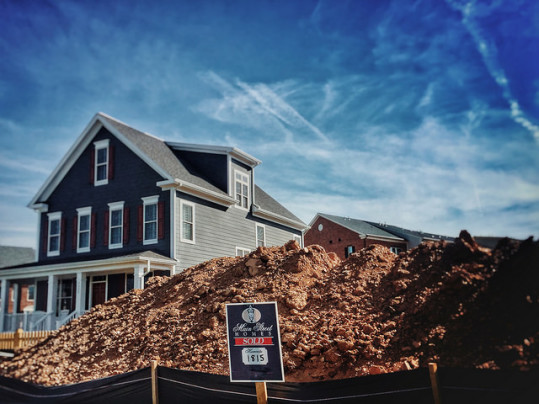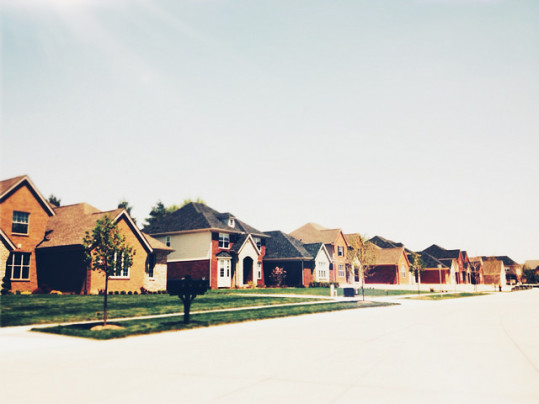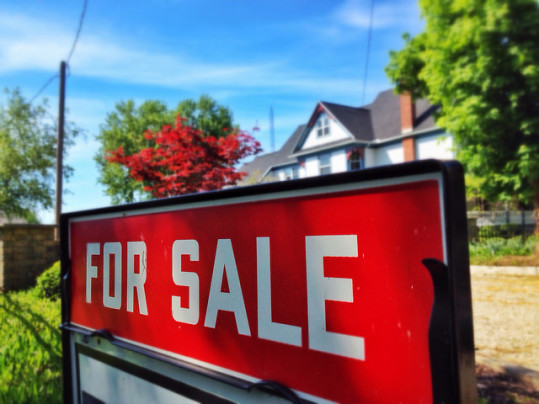There are a handful of common answers that come up time and time again when Americans are surveyed about their reasons for buying a home. For example, a desire for more space is always at or near the top of any list documenting prospective buyers’ main motivations. After all, if you’ve run out of space where you are – whether it’s because you’ve started a family or because you’ve got a lot of stuff – you’re probably going to be eager to move somewhere bigger. But though survey after survey finds we all share some common wants and needs when it comes to our homes, a new survey of young Americans who have never owned a home found a surprising reason behind their desire to become homeowners. So, what was it? Well, 42 percent of respondents said their dog, or desire to have one, was a key factor in wanting to one day buy a home of their own. And, though that may seem unusual to those of us who don’t have pets, those that do, more often than not, consider them a part of their family. So, for a renter who may have trouble finding a landlord that will allow pets at all or one that won’t charge them extra for having one, buying a home can provide a less stressful environment for both the homeowner and their beloved pet. More here.
Archive for July 2017
Why New Home Sales Should Matter To You
There are many parts to a healthy housing market. Whether you’re talking about home prices, mortgage rates, new home construction, or another housing metric, each one of them have an effect on home buyers and sellers – even if some of those effects aren’t as obvious as others. Take new home sales. If you’re not looking to buy a new house, how does it affect you? Well, for one, when new homes are in demand, more new homes get built. And, when more new homes get built, the boosted inventory of homes for sale can help reduce price increases. For example, the current housing market’s main challenge is too few homes for sale. Because inventory has been low in many markets, buyers have seen prices go up and choices decline. So, news that new home sales increased in June for the second straight month is encouraging because increasing sales could help spur more new homes to be built, which would help balance the market and keep prices from becoming unaffordable for the average buyer. So, even if you aren’t in the market for a new home, you could indirectly benefit from more new homes being bought and sold in your neighborhood. More here.
Economist Says Housing Market Isn’t In A Bubble
If you’re thinking about buying a house any time soon, you’ve likely been wondering about home prices. There are a couple of good reasons for this. One is affordability. With mortgage rates low, prices are the natural place for buyers to focus their attention when trying to figure out if now is a good time for them to buy. The other reason buyers might be concerned about prices is worry that they may soon begin to fall. After all, nobody wants to buy right before prices crash and they can only rise so high before it’s considered a bubble that will eventually burst, right? Well, not really. According to David M. Blitzer, managing director and chairman of the index committee at S&P Dow Jones Indices, the housing market is not repeating the familiar bubble-bust cycle. “Housing is not repeating the bubble period of 2000-2006; price increases vary across the country unlike the earlier period when rising prices were almost universal,” Blitzer says. And that’s true. In many areas, home prices have not yet returned to their previous peak and buying a house remains an affordable choice. The other reasons Blitzer cites in arguing that current price increases aren’t a sign of another housing bubble are the lack of homes currently for sale and the fact that new home construction is still lagging behind previous norms – both factors that will put upward pressure on home prices. More here.
Buyer Demand High As Sales Stay Above Last Year
New numbers from the National Association of Realtors show sales of previously owned homes were slightly above year-before levels in June, though they fell from the month before. The month-over-month drop was primarily blamed on there being too few homes for sale, as buyer demand has been relatively high. Lawrence Yun, NAR’s chief economist, says available inventory remains low and it’s pushing prices higher. “Closings were down in most of the country last month because interested buyers are being tripped up by supply that remains stuck at a meager level and price growth that’s straining their budget,” Yun said. “The demand for buying a home is as strong as it has been since before the Great Recession.” The combination of high demand and low inventory has created an environment where homes in an affordable price range are being sold quickly. In fact, 54 percent of homes in June were sold in less than a month. However, as the summer winds down, so should the number of buyers active in the market. As that happens, there will be more opportunities for buyers looking to purchase a home without as much competition from other buyers. More here.
Is Buying A Home Still An Affordable Choice?
These days, determining the affordability of buying a home isn’t such a simple calculation. There are always a lot of variables to consider – including prices, mortgage rates, wages, and local factors – but today’s housing market contains a number of contradictions that may make it even more difficult for potential buyers to figure out. For example, home prices have recently been making a lot of news, mostly because they’ve regained much or all of the value lost following the housing crash. At the same time, though, mortgage rates have remained just above historic lows for the past several years. In other words, if you live in an area where home prices have been slower to rebound, low mortgage rates likely mean homes are still a good deal in your neighborhood. On the other hand, in some areas – where home prices have pushed beyond previous highs and low inventory is limiting available choices – favorable mortgage rates make less of an impact. Sean Becketti, Freddie Mac’s chief economist, says buying is affordable for the average household, though challenges remain. “Thanks to very low mortgage rates, monthly mortgage payments are affordable for the average household despite currently high house prices,” Becketti said. “Nevertheless, hurdles to homeownership arise from the difficulty of finding a house.” More here.
How Much Equity Does The Typical Homeowner Have?
Simply put, equity refers to the value of your home minus the amount of money you still owe on your mortgage. It is the factor that separates homeowners from renters and is among the greatest creators of wealth for average Americans. But how much equity does the typical homeowner have? Well, according to new numbers from Zillow, the median homeowner with a mortgage has $78,683 in equity. Homeowners who have paid off their mortgage, on the other hand, have $177,158. And while there are a number of variables that determine how much equity an individual homeowner may have, it is clear that the increase in home prices over the past few years has helped homeowners build back value in their homes. The study did find, however, that some homeowners are doing better than others. When broken down demographically, homeowners between the ages of 35 and 50 tend to have a lower percentage of equity than other generations. Why is that? Well, one reason could be that Generation X home buyers were most affected by the housing crash, as they would’ve been at the prime buying age for a first home in the years just before prices fell. More here.
Flat Mortgage Rates Lead To Spiking Demand
According to the Mortgage Bankers Association’s Weekly Applications Survey, average mortgage rates were down or unchanged across all loan categories last week. Rates for 30-year fixed-rate loans with conforming balances remained unmoved from the week before, while rates for jumbo loans, loans backed by the Federal Housing Administration, and 15-year fixed-rate loans all fell. Joel Kan, an MBA economist, told CNBC mortgage rates were steady mostly because of recent testimony from Fed Chair, Janet Yellen. “Treasury yields were slightly lower last week as testimony from Yellen was perceived to be more dovish than expected, and as the market received data signaling weaker inflation and retail sales for June,” Kan said. “These factors kept the 30-year fixed-contract rate flat over the week.” Flat mortgage rates led to a surge in mortgage activity, though. In fact, refinance activity was up 13 percent from the previous week, while demand for loans to buy homes was up slightly and remains 7 percent higher than at the same time last year. The MBA’s weekly survey has been conducted since 1990 and covers 75 percent of all retail residential mortgage applications. More here.







